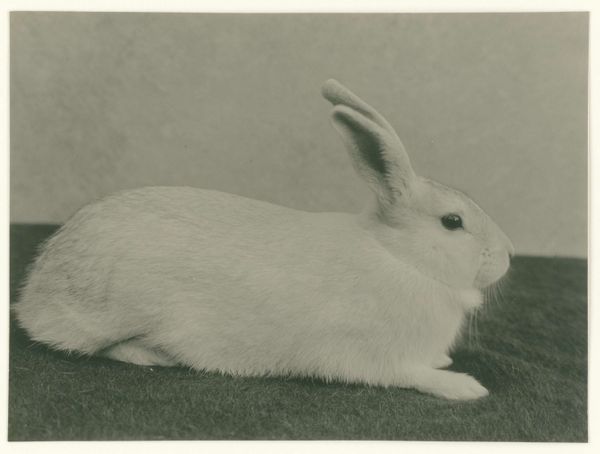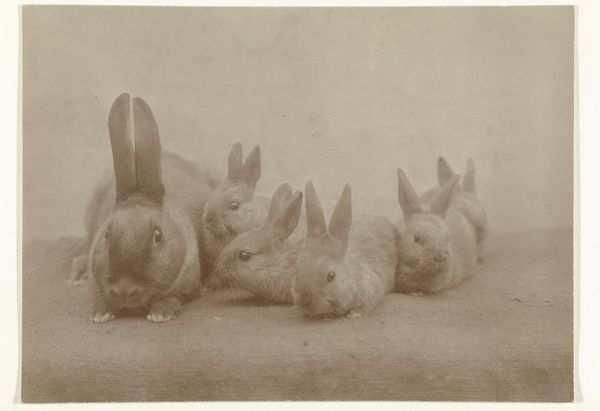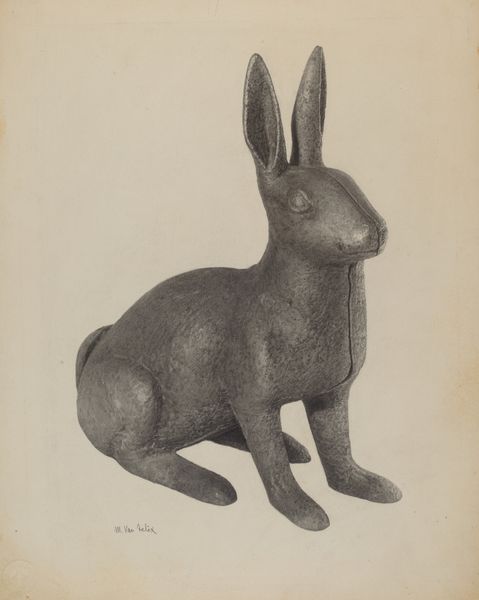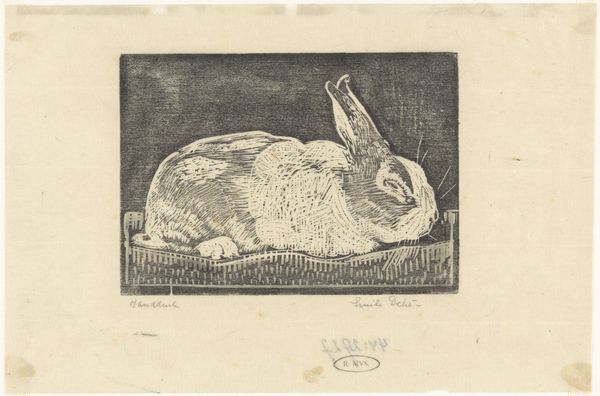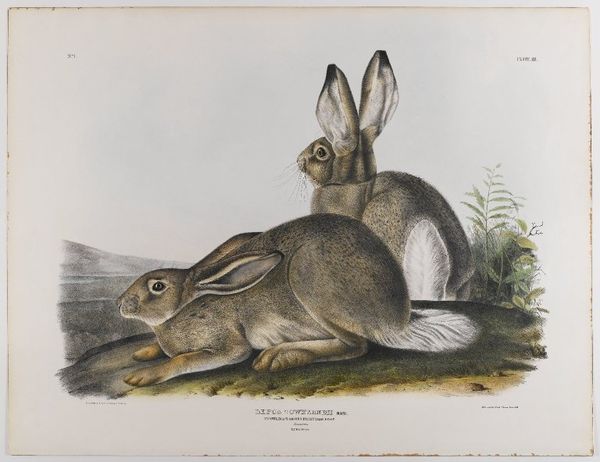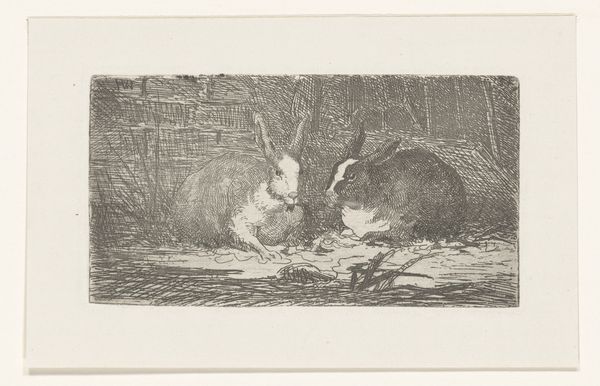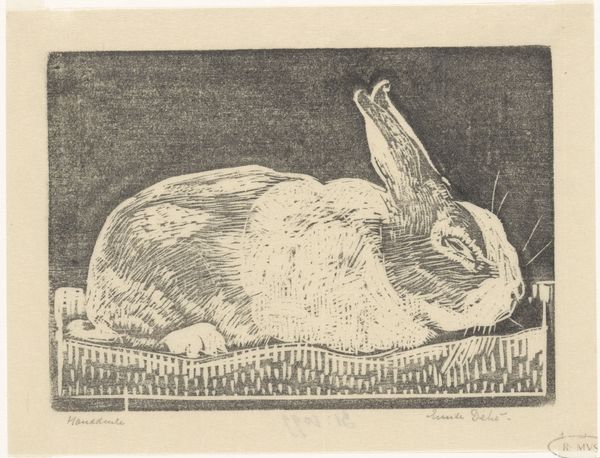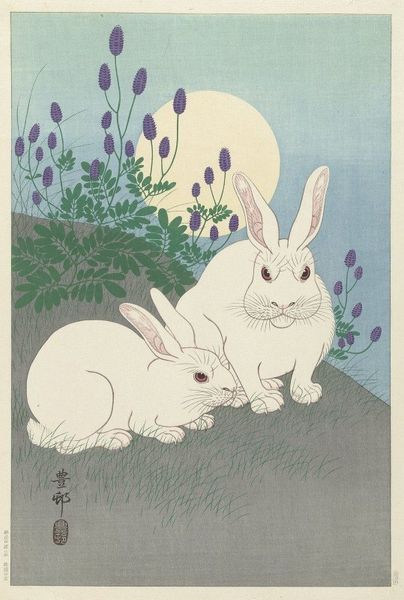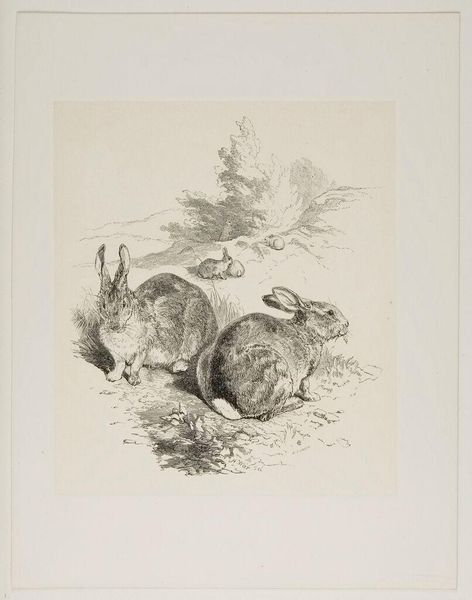
#
pencil drawn
#
photo of handprinted image
#
light pencil work
#
wedding photograph
#
photo restoration
#
natural tone
#
old engraving style
#
charcoal drawing
#
archive photography
#
celebration photography
Dimensions: height 164 mm, width 222 mm
Copyright: Rijks Museum: Open Domain
Curator: These sleepy, stoic rabbits captured by Richard Tepe between 1900 and 1930. A quiet, sepia-toned photograph housed here at the Rijksmuseum. What's your immediate take? Editor: Intimacy. There’s a quiet gentleness radiating from these two rabbits; their stillness and closeness invite a moment of reflection, like a shared secret, a comforting, wordless bond. They huddle on what seems like fresh earth. Curator: Yes, I get that entirely, it makes me think of childhood pets, really… a moment of peace perhaps before something inevitably went wrong in their world, you know, the cage door opened and a cat strolled past. Anyway, I feel Tepe has this knack of really zoning in on animal character, making them both noble and ordinary, as in, they are just rabbits! Editor: Exactly! That liminal space, that 'both/and' opens up crucial insights. Rabbits, historically, exist as figures of exploitation and commodification and exist as potent cultural symbols of fertility, the spring goddess Eostre and associated with subversive female desire. So who owns whom here, and to what end? Curator: Oh, that’s quite a reading. To be fair I didn’t see that at all… although now you mention it, the very earth they lie on – which struck me as ‘natural’, freshly turned – also represents a confined space for burrowing… a barrier maybe? A reminder that ‘freedom’ for these two will only ever be experienced on these limited terms. It's very… layered! Editor: It is layered! Consider too, who the photographic image addresses – a patriarchal scientific gaze focused on documenting the natural world; a turn-of-the-century colonial logic predicated on mapping bodies and resources. Whose order, finally, are we observing? Curator: Gosh… now I feel almost guilty for seeing only the softness. Perhaps the stark simplicity serves to heighten our awareness of control; even tenderness carries shadows, and Tepe manages to hint at those in such subtle ways. Editor: And perhaps this work challenges our romanticizing view of nature by highlighting the politics inherent in observation and representation, encouraging us to think critically about our place within it all.
Comments
No comments
Be the first to comment and join the conversation on the ultimate creative platform.
